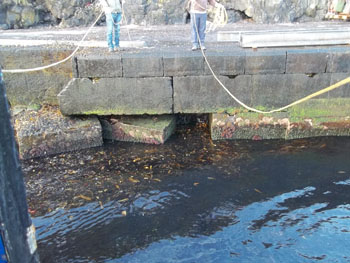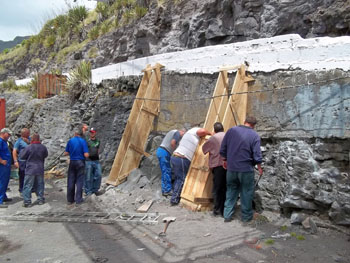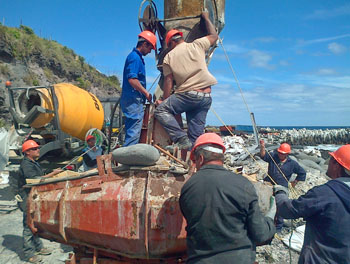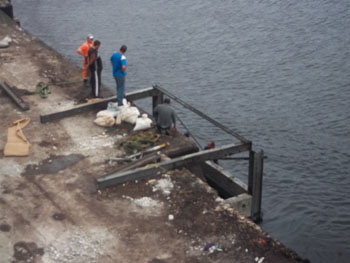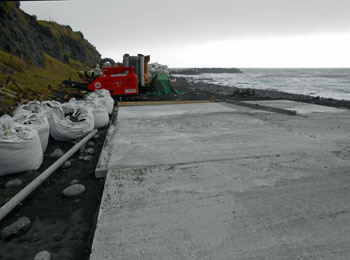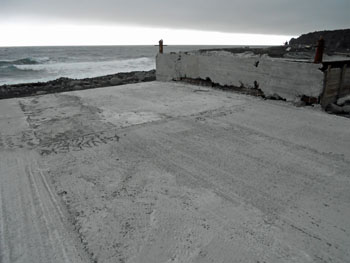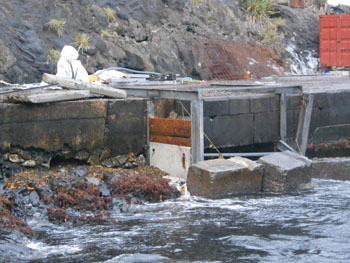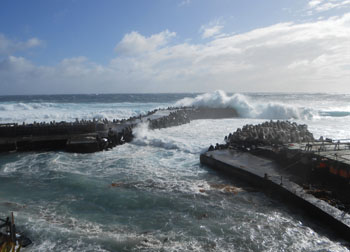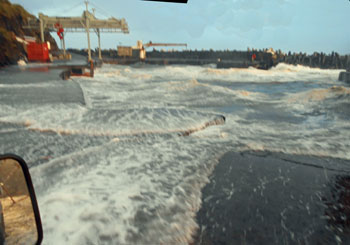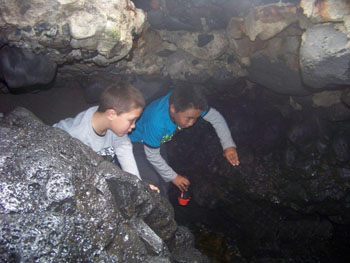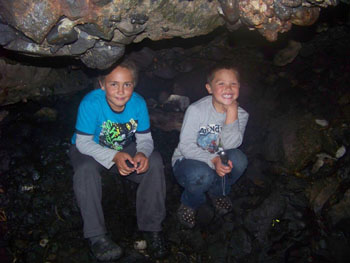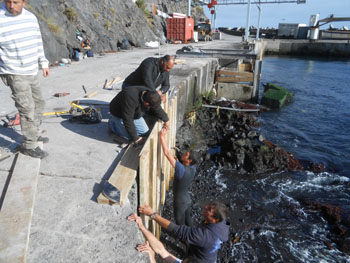Fears for state of Tristan's harbour as plans are shelved Following the news published on 20th June 2014 (see report below) that DFID will only be supporting emergency repairs to Calshot Harbour and not major refurbishment or the construction of a new harbour, we aim to report regularly on the state of the harbour and progress of local repairs, also funded by an EU grant. |
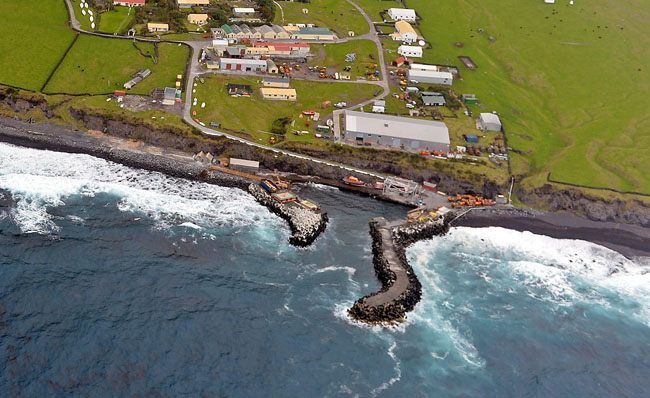
|
Calshot Harbour featured in an image taken from the helicopter of HMS Richmond on 31st October 2013 South Quay forms the landward wall of the harbour
with the large gantry crane sited on top
as shown in the main photo above.
|
| |||||||||||||||||||||||||||||||||||||
Calshot Harbour at the centre of Tristan da Cunha’s Future Economic Viability as major projects are shelved. Report from the Editor on 20th June 2014 The dire state of Tristan's Calshot Harbour remains a major concern for the remote island community as this week major projects are presently set aside as minor local repairs continue. This article is in preparation for the August Tristan da Cunha Newsletter but it is right that its contents are made public earlier. Alex Mitham summarised the harbour situation in his February 2014 Tristan Newsletter article he wrote: ‘The harbour is unfortunately another story which would give War and Peace a run for its money. As there are significant sums involved, this will continue to take time before a decision is taken. To highlight this issue, we were unable to off - load 200 tonnes of cargo from the Baltic Trader in December 2013 due to harbour conditions. This has led to a domino effect on 2014 sailings, and unfortunately put us behind schedule on several projects. However, owing to new impetus from individuals in DfID (where the funds sit for development of both harbour and hospital) I am once again hopeful that advances can be made in deciding on whether we enhance the existing structure, or construct a new harbour. It is very simple – without the harbour the community is not sustainable. It is the community’s life-line to the outside world. Without that, the community will not survive long-term. The years are taking their toll on the current structure, and repairs will not rectify the situation. This is fast becoming an untenable position.’ Tristan Government Representative Chris Bates highlighted the worrying state of Calshot Harbour when addressing the Tristan Annual Gathering in Southampton on 26th April raising the issue that if the harbour is not improved the viability of the Tristan da Cunha economy would be in doubt. Following Chris’ statement Sir Martin Holdgate led a discussion during the Annual General Meeting during which he clarified the crucial importance of a good harbour to the future of the Tristan community and urged members to contact their MPs to encourage the UK Government to make a commitment to ensure Tristan has an adequate harbour to ensure the long-term future of the island community. As a result many Tristan Association members contacted their MPs to highlight the critical importance of improving Tristan’s harbour and find out what plans the UK Government had to remedy the situation. Writing just before departing Tristan da Cunha on 21st May for the August Newsletter Tristan Administrator Alex Mitham wrote: Alan Waters, who served as Acting Administrator on Tristan 1995/6, was one of those association members present at the Annual Gathering who wrote to their MPs and he has forwarded to us a letter from DFID Minister of State Alan Duncan dated 30 May 2014 to his MP Michael Fallon in response to his query. In the letter Alan Duncan states: ‘The importance of the harbour to the continued sustainability of the island is clear. Each time the harbour has sustained damage, the UK Government has funded repairs to ensure it remains functional. Engineers estimate that the cost of rehabilitating the harbour would range from approximately £18 million to £29 million, depending on the cost of the refurbishment. Rebuilding the harbour in a different location would cost around £48 million. I understand the continuing risk that an unusually severe storm will cause catastrophic failure of the harbour. The need for reliable sea access to and from the island must be balanced with the very high cost of the substantial investment which would be required to significantly reduce the harbour’s collapse, and the extent to which this would reduce the costs of further repairs. I will shortly be deciding what the most important course of action is. In the meantime DFID will of course consider contributing to repairs required on an emergency basis should the need arise.’ Back in the UK, Alex Mitham confirmed on 17th June that DFID would presently only sanction continuation of the emergency repairs underway currently at Calshot Harbour and kindly funded by the EU. Presently, therefore a major harbour refurbishment or a new harbour on a different site, outlined as options by Alan Duncan above, will not go ahead. |

